How To Clean Carbon Filters For Grow Room? Step By Step Guide
by Lee Safin
It can be costly and inconvenient to replace a carbon filter; also, it is challenging to determine when you need to change or clean the air filter.
So, we are looking for a perfect answer on “how to clean carbon filters for grow room?“
If we say specifically, it’s difficult to clean a carbon filter for grow room. But it’s not impossible. By following the simple seven steps you can easily clean the carbon filter for grow room. The life span will not increase. So it’s better if you can buy a new one.
You have to rely on educated guesses and manufacturer recommendations.
So it is wise to decide on a time frame and then wash your air filter regularly after a certain number of days or weeks.
In this article, we will discuss “how to clean carbon filters for grow room?” But to know it efficiently we need to make our concepts clear at first.
Contents
- What Is a Carbon Air Filter?
- Is It Possible To Clean A Carbon Filter?
- How To Clean Carbon Filters For Grow Room?
- Importance of Carbon Filter In Grow Room
- What Affects The Lifespan of a Carbon Air Filter?
- The Plants In Your Grow Tent
- Carbon Filter Type
- Cleanliness of The Grow Tent
- Insects and Pests In The Grow Tent
- The Humidity of The Grow Tent
- How to Determine a Blocked Air Filter?
- Carbon Air Filter Maintenance Tips
- What We Learned!

What Is a Carbon Air Filter?
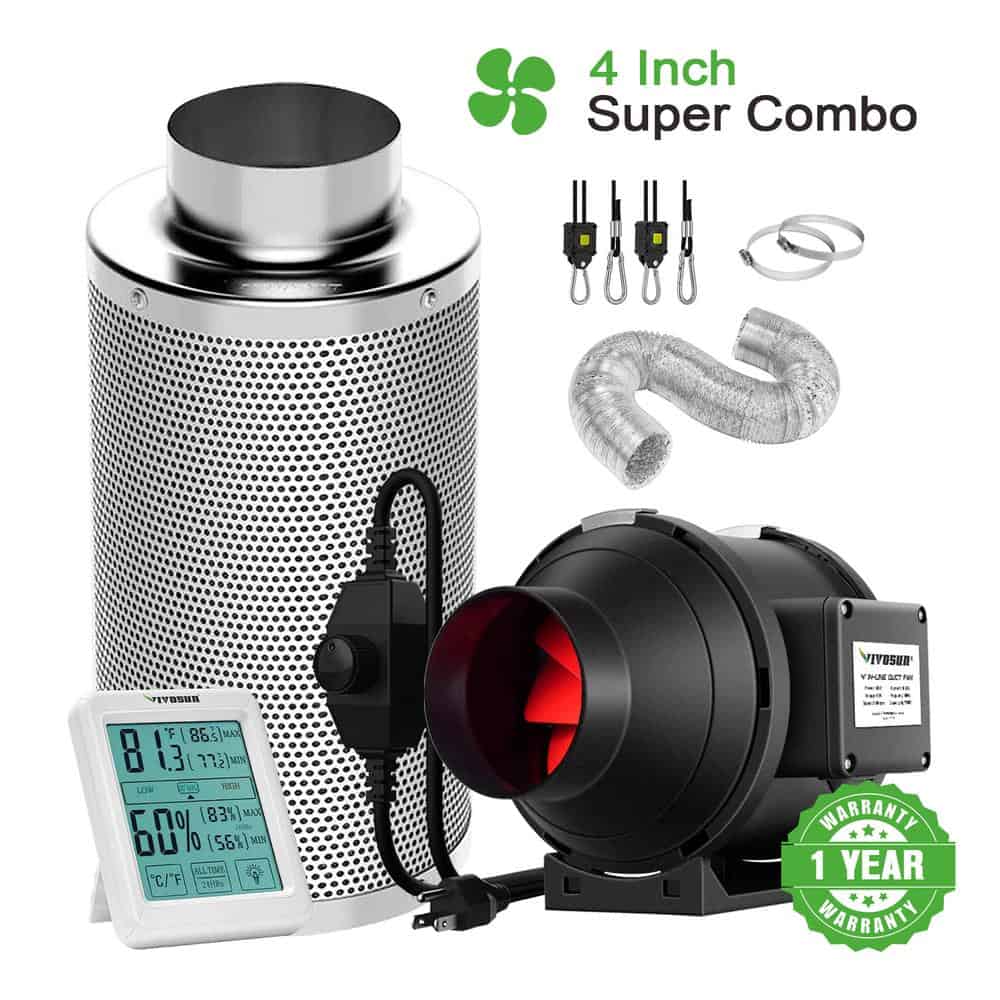
Carbon air filters are the most commonly used filter to remove pollutants and odor from the atmosphere.
These air filters use activated charcoal or carbon to absorb the air from one end and then filters it.
They are used in various ventilation process, for example, it is used to filter the air from household kitchens and even in the ventilation of car engines.
However, they do have certain limitations as they cannot remove massive particles from the air, such as pollen or mold.
This also makes carbon air filters ideal for grow tents as you don’t want the pollen from your plants to be filtered out.
General air filters like in the kitchen or living room require slower air filtration, like 2m per second, with pollutants ranging from 2nm to 25nm.
The ventilation in a grow room required faster air filtration of 7m per second, where the target pollutants are also much larger ranging from 10nm to 100nm.
Usually, in a grow tent, we tend to have a ventilation system where there is an outflow of the polluted air and the inflow of fresh air. We got the best carbon air filter available in the market for your grow room. You can click here to check the price on Amazon (VIVOSUN carbon filter for grow room).
VIVOSUN CFM Inline Fan

Additionally, you can add a scrubber as well in a grow tent if you require further air purifying.
A scrubber is a carbon air filter attached to an exhaust fan and just left to hang in a grow tent. This scrubber has no ducting; it is just the air filter and an exhaust fan attached.
The purpose of these scrubbers is only to filter the air, not extract the polluted air. It absorbs the stale air and filters it by removing odor and pathogens and releasing the air back into the grow tent.
Since there is no ducting, it directly absorbs the air and releases it right back into the tent. You can also choose to add a duct in the air outflow channel with the other end at the bottom of your grow tent.
So the whole process should work as hot, polluted air rises.
It gets sucked in by the air filter, which then processes it and releases it right through the duct to the bottom of the grow tent.
Before jumping into, how to clean carbon filters for grow room? We should have an idea about the importance of carbon filters in grow room.
Is It Possible To Clean A Carbon Filter?
Most of the articles on the internet will say, “it’s possible, and it’s the best way. But we will say, “it’s difficult.”
However, it is possible to clean a carbon filter if you can follow our steps carefully, but it’s better if you can replace it.
Cleaning a carbon filter may help you financially, but it does not mean that the life span of the carbon filter is going to increase.
The life span will not increase. So it’s better if you can buy a new one, but if you cannot accept, then follow our steps and make your carbon filter clean.
How To Clean Carbon Filters For Grow Room?
Before we begin on how to clean an air filter, I would advise you to keep in mind that these filters can hold much dirt, dust, and other materials filtered from the air.
Therefore, it is best to cover your workspace floor with old bedsheets, plastic, or even old newspaper. You can even clean it outdoors if it is convenient for you as it will make your surrounding regions quite messy.
Step 1
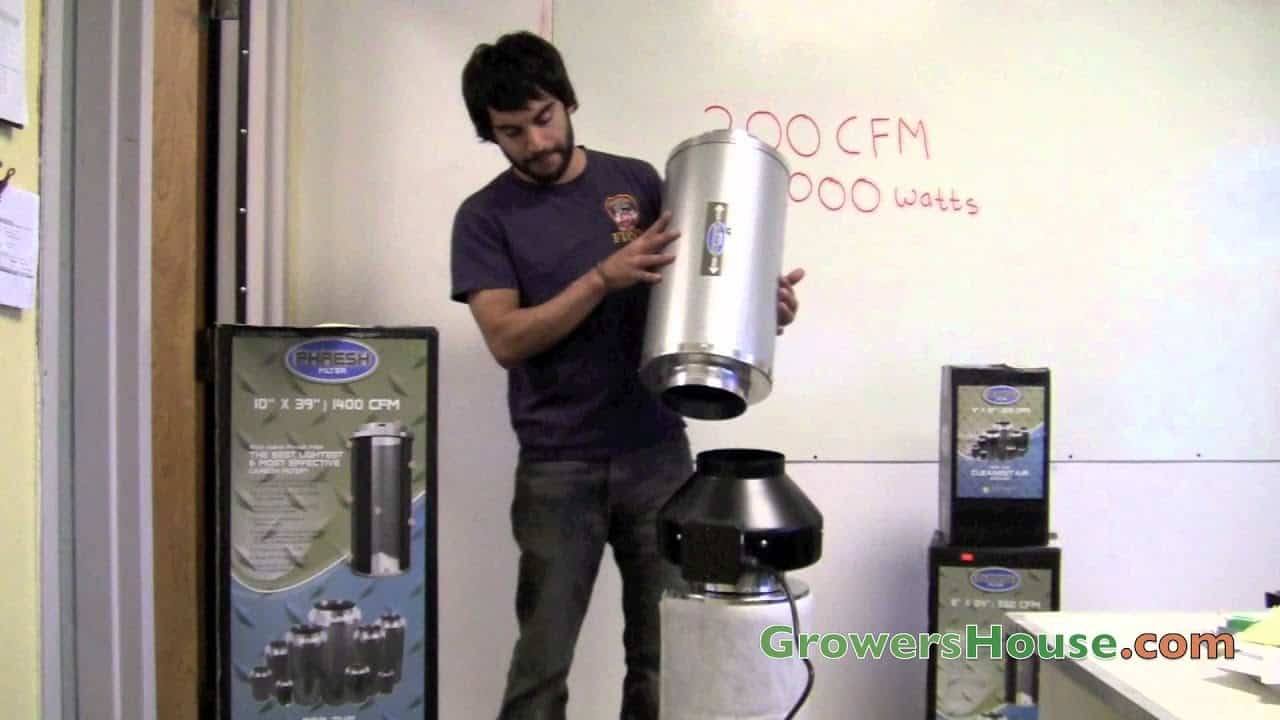
Carefully unplug your appliance and remove it from your grow tent. The cover of most air filter types is detachable, which will give you easy access to the filters inside.
If you are unsure of how to remove it, refer to your manufacturer’s instruction manual. Once you have managed to uncover it, gently remove the carbon air filter.
Step 2
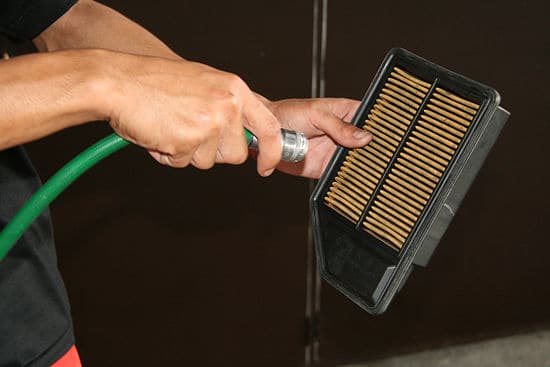
Once you have the air filter removed, try scraping off some of the huge dirt particles. It would be best if you then vacuumed it gently.
I would highly recommend using a handheld vacuum to give you more ease in cleaning out the dust and prevent you from damaging your air filter.
Vacuum in a horizontal motion and increase the suction power if you have to remove deeply embedded dirt but do not push your nozzle into the carbon air filter.
Step 3
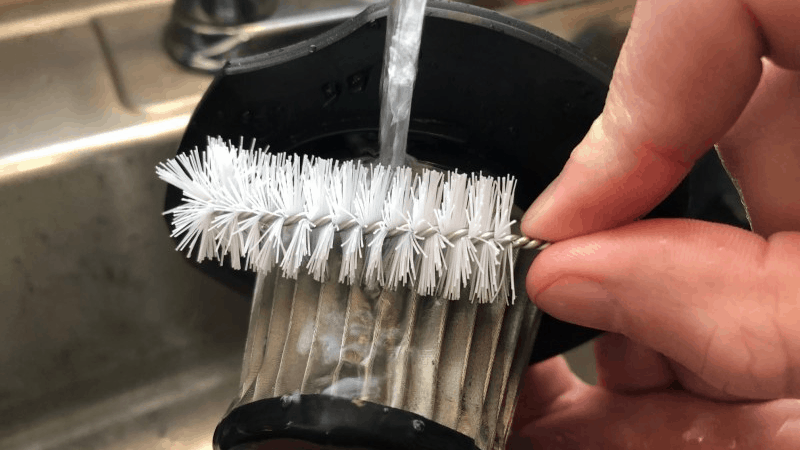
Once you have the filter vacuumed, use a brush to dust away any remaining dust.
If there is a lot of smell coming out from your air filter, consider leaving it in the sunlight for a few hours. This will help neutralize the odor significantly.
Step 4
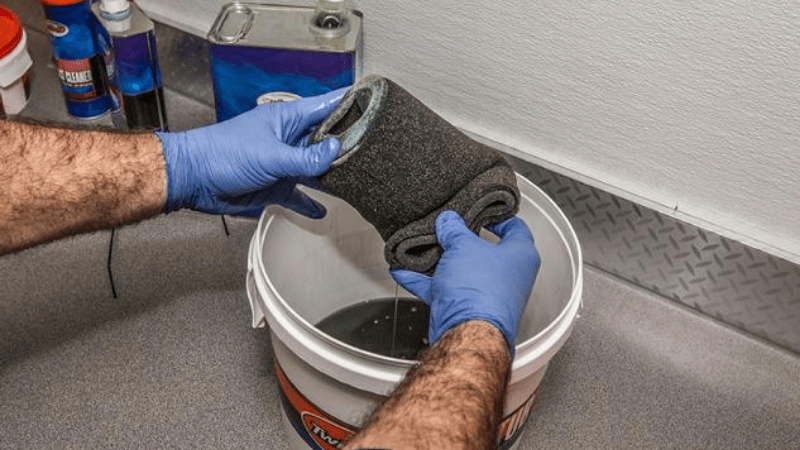
After vacuuming your air filter and removing all the dust, take a bucket of hot water and add a cup of detergent or dishwasher.
Now soak your carbon air filter in the bucket of water. Submerge it and leave it in the bucket of water for 15 to 20 minutes.
Try shaking the carbon air filter gently from side to side inside the bucket of water. This will help further remove any grime and dust still present.
Step 5
Once you have washed the air filter with soap water, do not forget to rinse it. Be gentle in this step as you can easily damage the air filter.
It is best to take hot water in a bucket and submerge the air filter in it just like the previous step except for the detergent or dishwasher.
Step 6
Once the air filter has been appropriately cleaned and rinsed, leave it in sunlight for as long as possible but ensure that it is scorched.
I would advise you to leave it for a whole day as this will guarantee that the air filter has dried.
Step 7
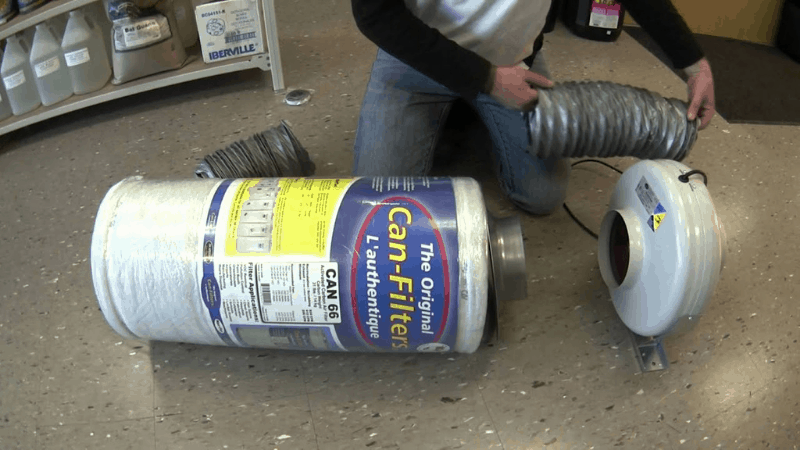
Once you have dried the carbon air filter, place it back and attach the cover. Once again, refer to the manufacturer’s instruction manual if you are having trouble reassembling the air filter.
Once it is reassembled, you will have an air filter that is clean and efficient like it was almost new.
Importance of Carbon Filter In Grow Room
Activated carbons have millions of tiny, porous pores, which are very absorbent. The application of carbon air filters is many. However, its primary uses in a grow tent are as follows.
N.B. If you are looking for the Best Portable AC For Grow Tent, check our linked article.
Removes Odor
Some crops can give out an odor that can be quite repelling to some neighbors, such as cannabis. In this case, it becomes necessary to filter the air in your grow tent instead of just ventilating it.
Applying a carbon air filter to both ends of your airflow channel, especially your outflow, is very beneficial. It will remove almost all of the smell before the stale air (oxygen) is vented out in the open.
Ventilation
Some carbon air filters come with an additional exhaust fan. This is a necessity for grow tents. Whether you have an air filter or not, you need ventilation.
This is because plants when they respire, take in carbon dioxide and give out oxygen.
If there is no ventilation, then the grow tent will be filled with oxygen, and your plants will not be to photosynthesize and live.
Too much oxygen in a secure place is highly flammable.
Removes Airborne Diseases and Pathogens
When you start to grow plants in a grow tent, you eventually turn it into an ecosystem. This ecosystem will also give birth to small microorganisms.
These organisms or pathogens can sometimes harm the plants. These microorganisms, especially those airborne, will be eliminated when the air is continuously filtered using a carbon air filter.
Absorbs Smog In The Atmosphere
When mixed with fog, vehicular and industrial pollution from a layer of visible smoke coined as smog, this is very harmful to your plans and health.
Sometimes in our ventilation channel in a grow tent, the air filter can draw in smog from the atmosphere. Smog will even burn the leaves of your plants in due course of time.
Activated carbon filters are even capable of absorbing smog from the atmosphere.
So it is wise to attach an air filter in the inflow channel so that atmospheric air is filtered before being released in your grow tent.
What Affects The Lifespan of a Carbon Air Filter?

As you use a carbon air filter, it slowly collects pollutants and loses its efficiency with time.
Finally, there is a stage where the air filter stops working altogether. In these cases, either you clean the air filter you change to a completely new one.
The longevity or how long your air filter will work with sufficient efficiency can be determined by various factors based on your usage.
The Plants In Your Grow Tent
The plants in your grow tent can have the most impact in blocking your air filter.
Some plants are aromatic and emit a lot of smell. Filtering this smell can put a significant load on your air filter’s capacity.
In these cases, it would be better to use multiple air filters or add a scrubber.
This will divide the air filtration load evenly, increasing the effectiveness of the grow tent’s ventilation. Your carbon air filter will also take longer to get dirty and be blocked.
Carbon Filter Type

The longevity of your carbon filter also depends on the type of carbon air filter you use.
Different brands of carbon air filters have different levels of longevity. Some are more expensive than others and perform more efficiently for a longer period.
There is also two types of carbon air filter
- Reversible and
- Irreversible
With time as the air filter gets clogged and its efficiency drops, you either clean it or replace it.
However, with a reversible air filter, you interchange the intake and exhaust opening.
This will make your air filter last a little while longer. On the other hand, with irreversible air filters, you either clean it and use it for a few more weeks or change it once it is saturated.
To avoid any kind of disturbance you need the best one for your grow room.


We got the best carbon air filter available in the market for your grow room. You can click here to check the price on Amazon (VIVOSUN carbon filter for grow room).
Cleanliness of The Grow Tent
The cleanliness of your grow tent will also directly affect the lifespan of your carbon air filter.
The dirt, twigs, dried leaves, and even your pollen will affect your air filter.
Small particles from these wastes also tend to get pulled by the air filter, and these may get stuck in the air filter, dropping its efficiency and eventually saturating the air filter.
It would be best if you tend to keep your grow tent clean consistently.
This will ensure less litter in your grow space and prevent the carbon air filter from getting clogged too soon.
Insects and Pests In The Grow Tent
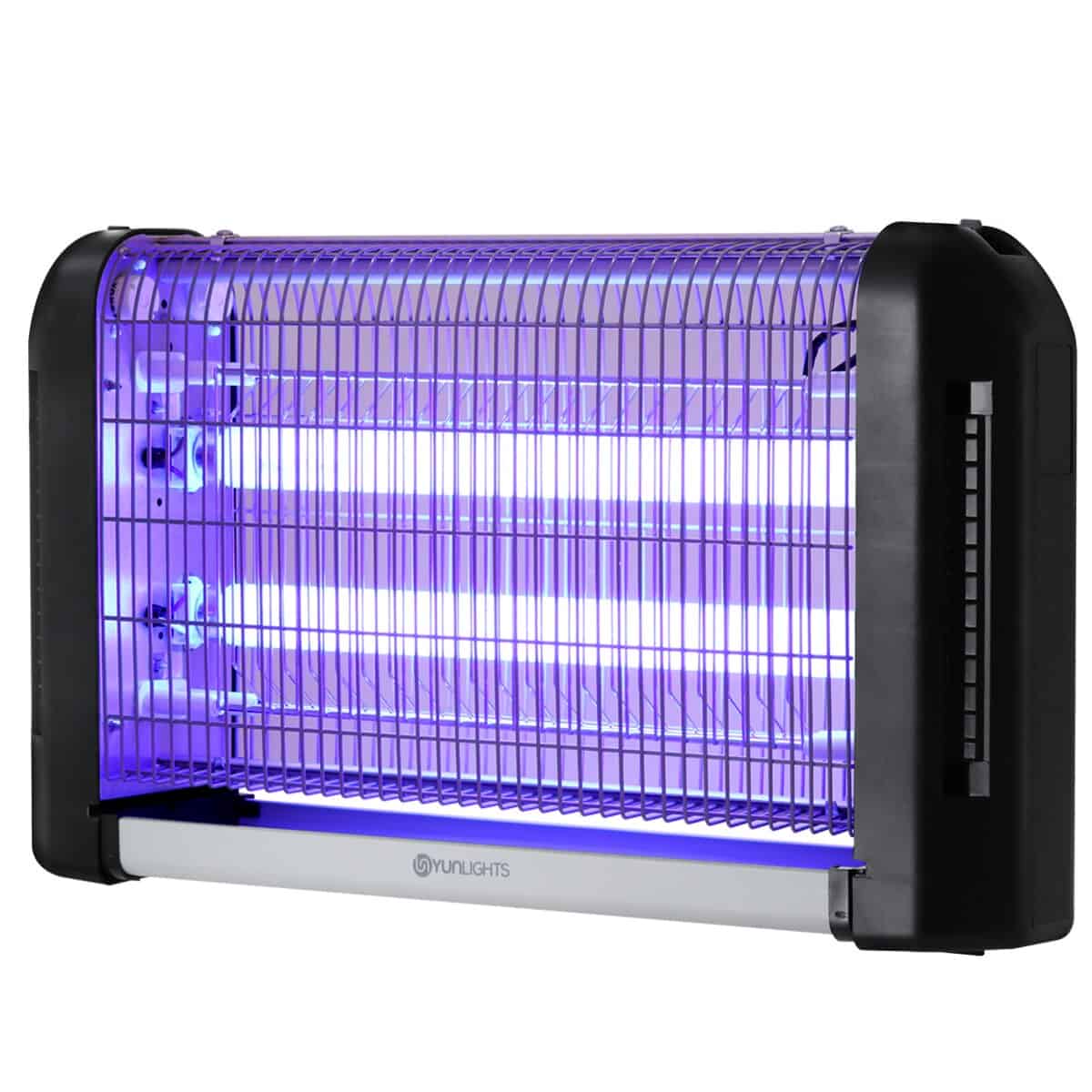
If there are lots of insects and pests in your grow tent, it is harmful to your plants, and it will also drop the efficiency of your carbon air filter sooner than expected.
Insects inside a grow tent mean you have a more extensive ecosystem.
Insects will leave behind a lot of dirt from their excretion to their dead bodies and wing clippings.
As I covered more dirt previously inside your grow tent, there will be more pressure in your air filter.
Eventually, this residue will clog the carbon filter and may even saturate it thoroughly.
Insects and pests will also damage your plants by eating away the leaves or the flowers.
However, sometimes, to control these pests, many gardeners employ another insect predator like the mantis, which starts to hunt these pests that feed on your plants.
Either way, insects inside the grow tent will eventually affect the life span of your air filter.
We got the best bag zapper available in the market for your grow room. You can click here to check the price on Amazon (ASPECTEK Powerful Electronic Indoor Insect Killer).
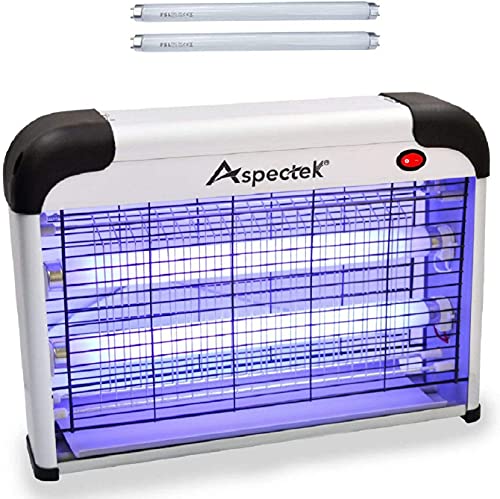

The Humidity of The Grow Tent
Another key element that many gardeners tend to overlook is the humidity level in your grow tent. Humidity is water vapor present in the air.
This affects the activated carbon in your air filter. If the relative humidity in your grow tent is above 70%, your carbon air filter will completely stop functioning.
This is because the water vapor will be absorbed instead of the air molecules that need to be filtered.
As the water vapor is being absorbed, it will leave less space or pores for the carbon air filter’s polluted gas molecules.


I would always suggest you keep your relative humidity below 60%. This will ensure that your air filters are still functioning at an acceptable efficiency.
You can always purchase a dehumidifier if the humidity levels in your grow tent are too high. As the name suggests, a dehumidifier will help reduce the humidity level in your grow tent.
How to Determine a Blocked Air Filter?
As I mentioned earlier, it can be very tricky to determine a blocked or saturated carbon air filter. It would be best if you always serviced it or change it after a specific amount of time.
However, if you have lost track or feel that your filter might be saturated, always lookout for the following signs. This will help you to determine if your air filter is still functioning.
The Smell of The Activated Carbon
The first and most reliable step is to smell your air filter. When you get a new carbon air filter, you will smell the fresh activated carbon.
However, in due course of time, a used carbon filter will lose its properties. Usually, after 3 to 4 months, you will start to notice that the strength of the smell of your air filter has changed.
You will know that the carbon is completely saturated and used when you don’t smell activated carbon. In these cases, you should either change your air filter or clean it.
The Smell of The Air Coming Through The Air Filter
We smelled the activated carbon air filter to determine if it was saturated and needed to be serviced in the previous step.
This step is also similar, but instead of smelling the carbon filter, you check for your grow tent’s smell. This method will help you determine the air filter condition that is responsible for your air outflow.
Now your plants will have their smell. So you check in your exhaust or air outflow system.
If the air released still smells the same as the air in your grows tent, then it is time to service your air filter.
Additionally, you can also use pesticides or some chemicals that are beneficial for your plants. If your carbon air filter needs servicing or is saturated, you will smell the chemicals in your air outflow system.
Symptoms In The Plants
We often take the utmost care for our plants, from watering them to keeping them pest-free.
Still, you might notice your plants withering.
One of the main reasons for this might be a faulty ventilation system despite all the necessary care. It will be time for you to check your carbon air filter to see if it is clogged.
A Skilled Technician or An Experienced Person
As a first-time gardener, it is positively normal to seek the help of a professional or an experienced person in determining the efficiency of your air filter.
I would advise you to seek the help of an experienced gardener the first time in getting a time frame as to when you should check on your carbon air filter.
Now we are ready to touch on the topic “how to clean carbon filters for grow room?”
Carbon Air Filter Maintenance Tips
Many factors can drop the efficiency of a carbon air filter and stop it from working altogether. Below are some things that you should keep in mind when using a carbon air filter.
This will prevent you from damaging your air filter or find the reason behind it malfunctioning.
Keep in mind that the carbon filter, exhaust fan, and duct pipes are connected to form one ventilation system. Any problem in one can cause the whole ventilation system to malfunction.
Humidity can stop an activated carbon filter from functioning. Activated carbon becomes compact when humidity increases.
Relative humidity covering 75% to 80% of the grow tent will make the carbon filter compact. This will stop it from functioning properly because air will not be able to pass through it.
A carbon air filter that is compact due to increased humidity will prevent air from passing through it. This will put a strain on your exhaust fan as it will have to do additional work.
Because of this, your exhaust fan can overheat, affecting your whole ventilation system’s longevity or lifespan. An overheated exhaust can also be dangerous, especially if your electrical installations are faulty or lose.
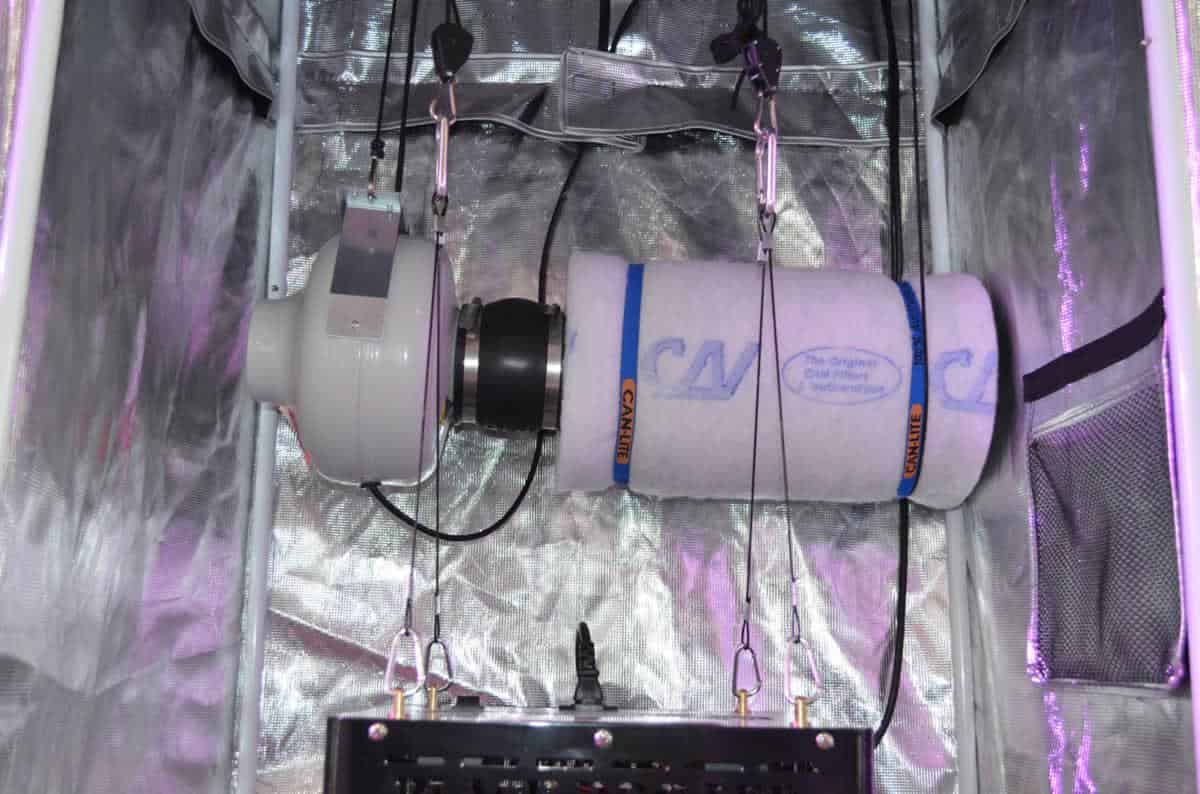
You should always switch off your ventilation system before spraying pesticides, fertilizers, or merely watering your plants.
If your ventilation is running, the air filter will pull the water molecules from the spray and eventually compact the carbon or block your air filter.
Remember, there is a shell life to your carbon filter. Check the date in the box of your air filter or contact the manufacturer to be certain about the date.
Once your air filter’s shell life is up, it will no longer function and remove any impurities or odor from your grow tent.
After a season’s harvest, if you plan on storing away your carbon filter, use the cleaning as mentioned above technique and clean all the debris from the air filter.
Then place it back in its original package along with some silicon sachets. These sachets will help keep the humidity down. Store it in dark and dry places, and it should be able to serve you again next season.
When purchasing a carbon air filter, always make sure they are 25% stronger than your exhaust fan. If they are not as strong as the exhaust fan, it will slow down the airflow disrupting the overall ventilation system.
What We Learned!
After going through this article, hope you understood “how to clean carbon filters for grow room?”
By now, you should be aware that the primary way to determine a saturated air filter is through smell.
However, it would be best to wait for a carbon air filter to stop functioning before servicing it.
Set down a scheduled timetable when you should check your air filters at regular intervals.
Suppose if your first air filter lasts four months the first time, then make it a habit of checking on your air filters every two and a half to 3 months.
Remember, as your plants grow, it will put more pressure on your air filters.
The ventilation system is the lungs of your grow tent, so always be alert to your air filter’s efficiency.
Do you know carbon filters also play a magnificent role in the cosmetics industry?
What are the roles of carbon filters in the manufacturing facilities of cosmetic industries? Click on the link to read the article.
Last update on 2023-01-28 / Affiliate links / Images from Amazon Product Advertising API
Buy on eBay, Walmart, or Etsy
VIVOSUN carbon filter for grow room - Etsy, eBay
ASPECTEK Powerful Electronic Indoor Insect Killer - Etsy, eBay
 |
 |
 |
 |

About Lee Safin
Lee Safin was born near Sacramento, California on a prune growing farm. His parents were immigrants from Russia who had fled the Bolshevik Revolution. They were determined to give their children a better life than they had known. Education was the key for Lee and his siblings, so they could make their own way in the world. Lee attended five universities, where he studied plant sciences and soil technologies. He also has many years of experience in the U.S. Department of Agriculture as a commercial fertilizer formulator.
Thoughts on "How To Clean Carbon Filters For Grow Room? Step By Step Guide"
 |
 |
 |
 |
Get FREE Gardening Gifts now. Or latest free toolsets from our best collections.
Disable Ad block to get all the secrets. Once done, hit any button below
 |
 |
 |
 |